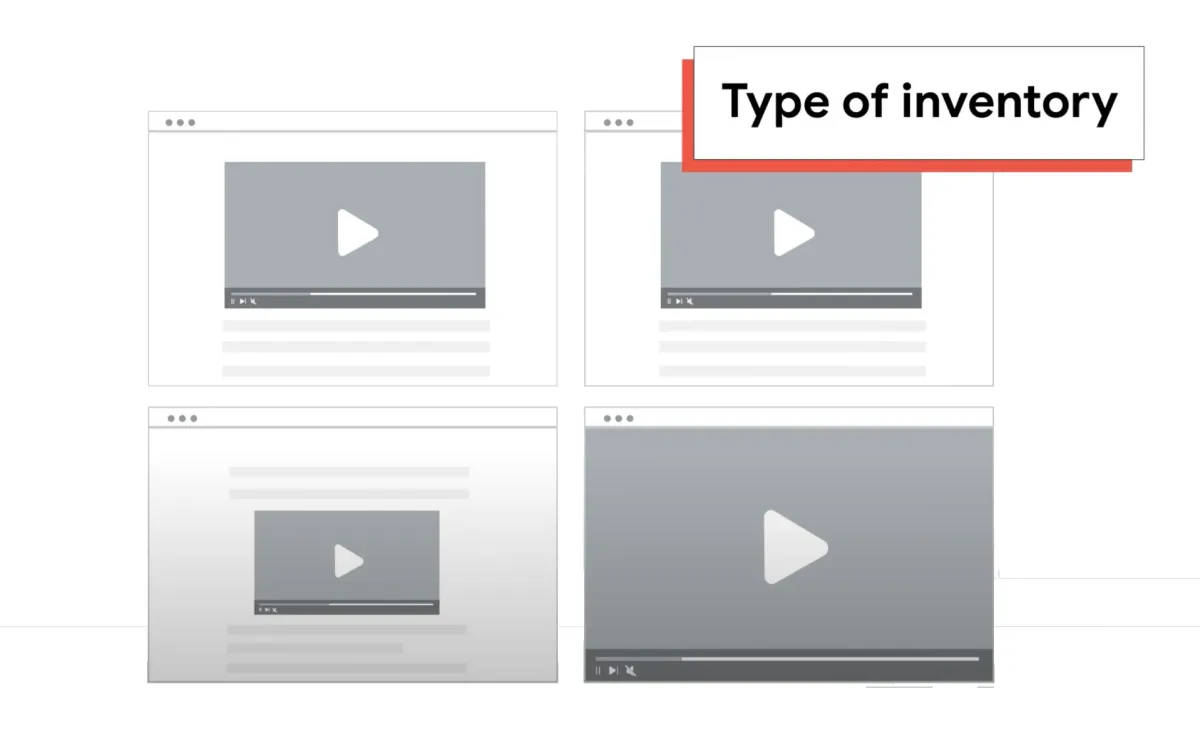
Google has released an educational video explaining its video inventory restrictions for publishers. The video, published on October 9, 2024, aims to demystify the guidelines for monetizing video content while adhering to Google's policies. This explainer offers a simplified breakdown of the rules, making them more accessible to publishers of all levels of expertise.
The video breaks down Google's video inventory restrictions into four main areas, using straightforward language and examples to illustrate each point. These areas focus on how publishers should handle their video ad inventory to create a fair and effective advertising environment.
Google's video outlines four distinct types of video inventory, each serving a different purpose in the digital advertising landscape.
In-stream placements are ads played within video content that is the main focus of the user's visit, such as a pre-roll ad before a requested video.
Accompanying content placements, in contrast, are video ads that play alongside the main content but are not the primary focus of the user's visit; these must be muted by default and load within the body of the page.
Interstitial placements are full-screen video ads that appear during transitions between content, taking up the majority of the viewport and serving as the primary focus of the page at that moment.
Finally, standalone placements are video ads that play independently of any other streaming video content but are not the main focus of the page, such as a video ad banner on an article page.
These distinctions are crucial for publishers to understand, as they affect how ads are implemented, how they interact with the user's experience, and ultimately, how they perform in terms of engagement and monetization.
Accurately describing Video Inventory
Google emphasizes the importance of publishers being clear about what kind of video ads they're serving. The video likens this to a nutrition label on food, highlighting two key aspects:
- Audibility: Publishers must specify whether the sound for their ad placement is on by default or muted.
- Type of inventory: There are four different placement types that publishers need to identify:
- In-stream: Ads played within video content that is the main focus of the user's visit.
- Accompanying content: Ads within content that are not the main focus of the user's visit.
- Interstitial: Full-screen ads played without video content, becoming the focus of the user's visit.
- Standalone: Ads that stand on their own, independent of other content.
The video stresses that clear descriptions help match videos with suitable ads, creating a more relevant experience for the audience.
Using supported implementations
To ensure optimal ad performance, Google recommends specific tools for different types of video ads:
- For in-stream or accompanying content: Use either the Google Interactive Media Ads SDK or the Google Programmatic Access Library.
- For interstitial or standalone ads: Use Google Publisher Tags for web or the Google Mobile Ads SDK for apps.
The video explains that these tools are designed to streamline the process, ensuring seamless ad delivery and accurate tracking of results.
Protecting advertiser value
Recognizing the vital role advertisers play in the ecosystem, the video outlines three key points:
- Functional controls: Viewers should be able to play, pause, mute, and skip ads easily.
- Audio ads in audible environments: Audio ads should only play where sound is expected and are not allowed in muted placements.
- No obstructions: Ads and their controls must remain clearly visible, without hiding or reducing the visibility of ads, controls, or the dismissal button.
These rules aim to create a fair and transparent advertising environment for all parties involved.
Respecting the user
The video emphasizes the importance of maintaining a positive user experience to keep viewers engaged:
- Autoplay with sound: Only one video at a time can autoplay with sound, and the ad can only autoplay when at least 50% of it is on screen.
- Sticky ads: These are allowed as long as the dismiss option is clearly visible throughout.
- Video player placement: For in-stream or accompanying content, the video player should start in the main content and only transition as the user scrolls off the page.
Implications for publishers
While the video doesn't introduce new policies, it serves as a clear reminder of Google's expectations for video ad inventory. Publishers may want to review their current implementations to ensure they align with these guidelines. The simplified explanations offered in the video can help publishers, especially those new to video monetization, better understand and comply with Google's requirements.
Technical considerations
Although the video aims for simplicity, it does mention specific technical tools that publishers should be aware of:
- Google Interactive Media Ads SDK
- Google Programmatic Access Library
- Google Publisher Tags
- Google Mobile Ads SDK
Publishers may need to familiarize themselves with these tools to ensure their video ad implementations meet Google's standards.
Google's explainer video on video inventory restrictions serves as a helpful resource for publishers looking to monetize their video content effectively. By breaking down complex policies into simpler terms, Google aims to create a more transparent and understandable advertising ecosystem.
The video encourages publishers to prioritize clear communication about their ad inventory, use the right technical implementations, protect advertiser interests, and respect the user experience. These guidelines, while not new, remain crucial for maintaining a healthy balance between monetization and user satisfaction in the digital advertising landscape.
Key Points
- Video published: October 9, 2024
- Main focus areas: Accurate inventory description, supported implementations, protection of advertiser value, respect for users
- Four types of video ad placements explained: In-stream, accompanying content, interstitial, standalone
- Recommended tools: Google Interactive Media Ads SDK, Google Programmatic Access Library, Google Publisher Tags, Google Mobile Ads SDK
- User experience priorities: Limited autoplay with sound, clear controls for sticky ads, considerate video player placement

